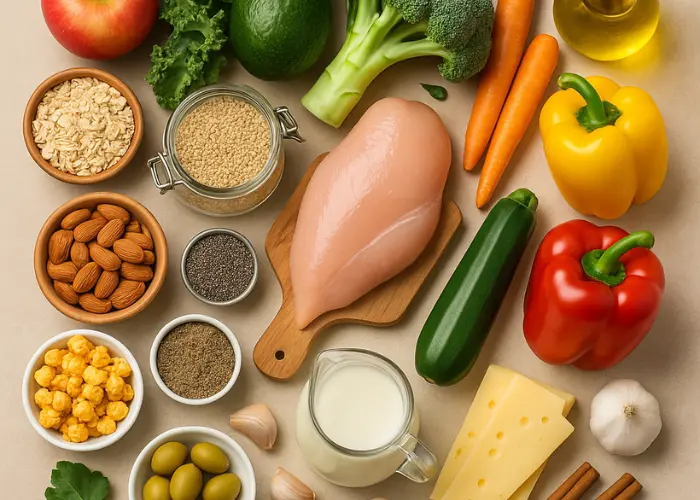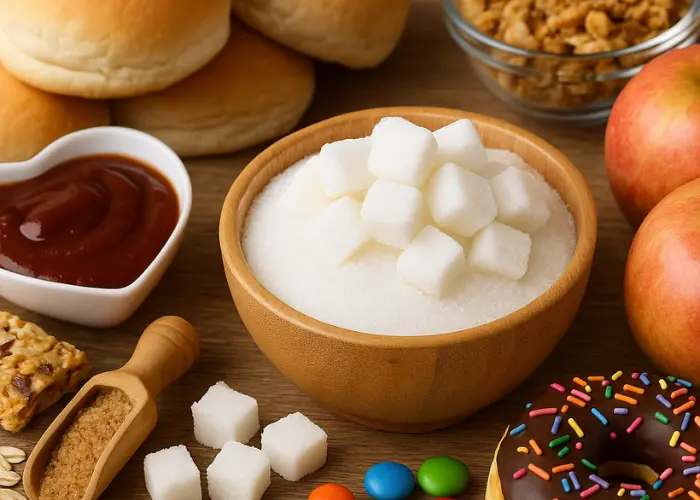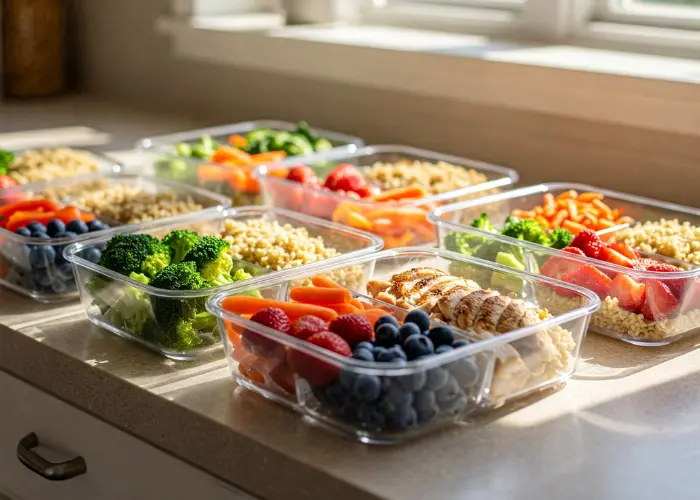Eating healthy starts at the grocery store. The choices you make while shopping can have a huge impact on your overall health, energy levels, and even your mood. But with so many products lining the shelves, how do you know what’s actually good for you?
This Healthy Eating Grocery Guide will help you make smart, nourishing choices by guiding you through each section of the store. Let’s turn your next grocery trip into a step toward a healthier lifestyle!
✅ Start With a Smart Plan
Before stepping into the store, keep these healthy shopping tips in mind:
- Make a list based on your weekly meal plan.
- Never shop hungry—you’re more likely to grab unhealthy snacks.
- Stick to the outer aisles—that’s where you’ll find the freshest foods.
- Read labels and avoid products with artificial ingredients or added sugars.
🥦 What to Buy: The Healthy Grocery List
🥬 Fresh Fruits and Vegetables
Fill at least half of your cart with fresh produce! Go for color and variety.
Examples:
- Fruits: Apples, bananas, berries, oranges, grapes, avocados
- Vegetables: Spinach, kale, broccoli, carrots, zucchini, bell peppers
📝 Tip: Choose seasonal produce for better flavor and lower cost.
🍞 Whole Grains
Ditch the white carbs and opt for whole grains that provide fiber and sustained energy.
Examples:
- Oats
- Quinoa
- Brown rice
- Whole grain bread or wraps
- Barley
🍗 Lean Proteins
Protein is essential for muscle repair and satiety. Choose lean, natural sources.
Examples:
- Skinless chicken breast
- Salmon, tuna, sardines
- Eggs
- Tofu or tempeh
- Beans and lentils
🥜 Nuts, Seeds & Legumes
Healthy fats and plant-based proteins all in one.
Examples:
- Almonds, walnuts, cashews
- Chia seeds, flaxseeds, pumpkin seeds
- Natural peanut or almond butter
- Chickpeas, black beans
📝 Tip: Choose unsalted and raw when possible.
🧀 Dairy or Plant-Based Alternatives
Look for calcium-rich options with little or no added sugar.
Examples:
- Greek yogurt (unsweetened)
- Cottage cheese
- Unsweetened almond, oat, or soy milk
- Hard cheeses in moderation
🫒 Healthy Fats
Don’t fear fats—just choose the right ones!
Examples:
- Extra virgin olive oil
- Avocados
- Coconut oil (for cooking)
- Olives
🍿 Smart Snacks
Snacking doesn’t have to be unhealthy. Prepare ahead to avoid cravings.
Examples:
- Air-popped popcorn
- Sliced veggies with hummus
- Rice cakes with nut butter
- Fresh or dried fruits (no added sugar)
🧂 Spices and Flavor Boosters
Skip the sodium-heavy sauces. Use herbs and spices to make your meals exciting and healthy.
Examples:
- Garlic, ginger, onions
- Turmeric, cumin, paprika
- Black pepper, chili flakes
- Fresh or dried herbs (parsley, basil, rosemary)
❌ What to Avoid (or Limit)
Steer clear of these common health traps:
- Sugary cereals and granola bars
- Soda and sugary drinks
- “Low-fat” products full of additives
- Ultra-processed frozen meals
- Processed meats (bacon, sausages, deli meats)
- Vegetable oils high in omega-6 (like soybean or corn oil)
🛍️ Final Tips for a Healthy Grocery Trip
- Choose foods with five ingredients or fewer on the label.
- Buy in bulk to save on nuts, seeds, and grains.
- Frozen fruits and vegetables are great for smoothies and last longer.
- Bring reusable bags—and a positive attitude!
📥 Bonus: Downloadable Printable Grocery List (Coming Soon!)
We’re creating a printable checklist with all the essentials from this guide—perfect to take with you to the store or keep on your fridge!
By using this guide every time you shop, you’ll find that healthy eating becomes simpler, more enjoyable, and more sustainable. Remember: small, consistent changes in your grocery cart lead to big results in your overall wellness.
🩷 Want more tips like this?
Check out our Natural Health section for easy, realistic ways to improve your daily habits!



